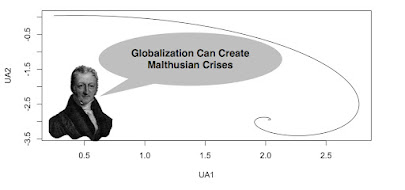Almost two decades after the Financial Crisis of 2008, economists are still puzzling over why they failed to predict the Financial Crisis and what the failure of predictions has to do with the underlying economic models. The answer is simple but the solution, needless to say, isn't.
Economic Models are unable to predict systemic crises because they do not look at the Economy as a system but rather as a collection of individuals.
The System, as opposed to the individual participants, has its own rules and the rules have very little, if anything, to do with the rational economic behavior of individuals, even if all participants in the system behave rationally, which they certainly don't! The System can still produce optimum solutions, but that is also basically hypothetical.
All of this has been argued before (see the references in the Notes below), but we aren't making progress because we don't have examples of economic system models that can be estimated from historical data. I will provide examples in this post.
Researchers in Biology, Earth Sciences, and Engineering have basically solved the "Systems Problem," but the Social Sciences are still struggling with qualitative mental models that, even in mathematical versions, cannot be tested and refuted. There are great examples in Sociology (Parsonian Systems Theory), Political Science (Easton's Political Systems Model) and Economics (Classical Economic Models).
Notes

































